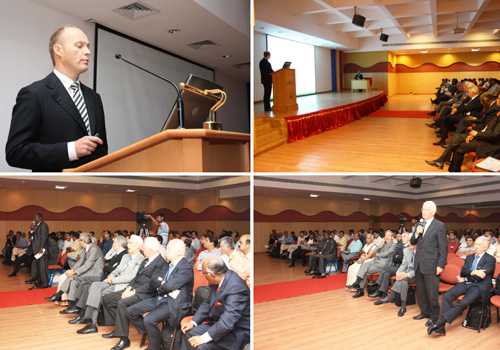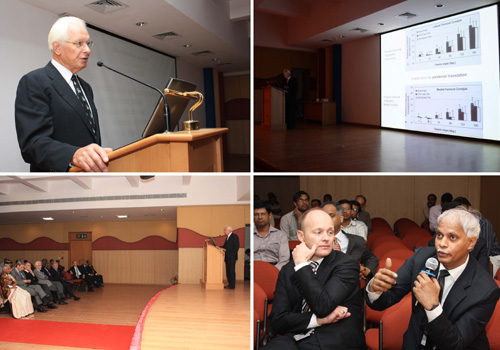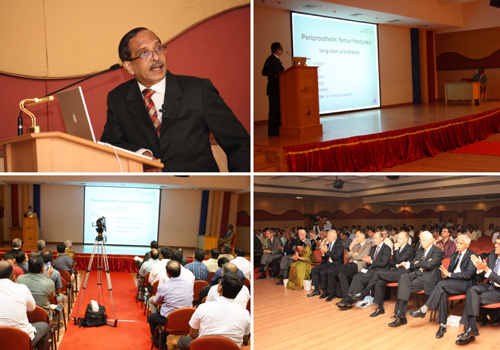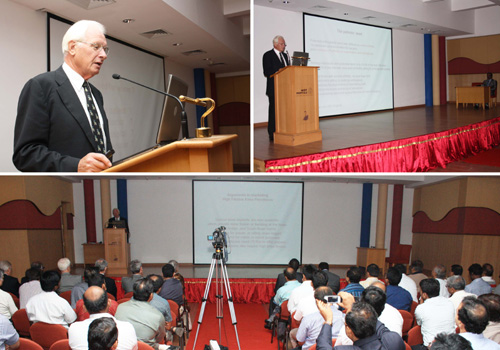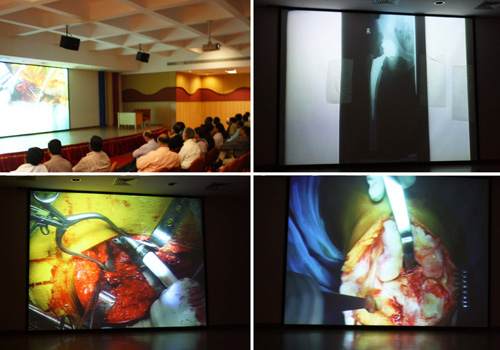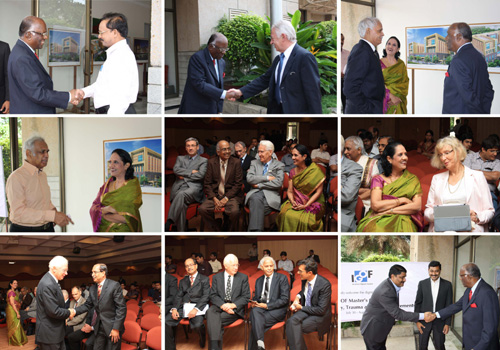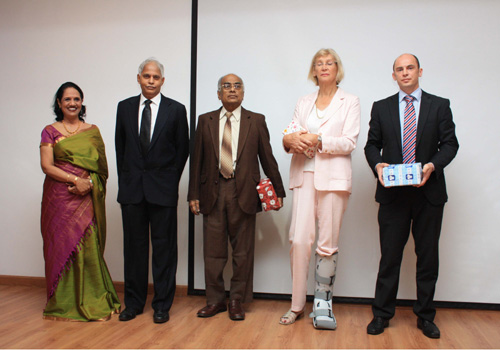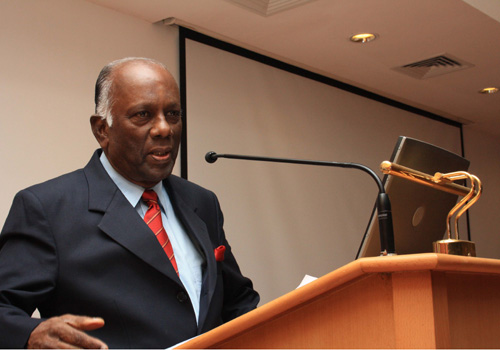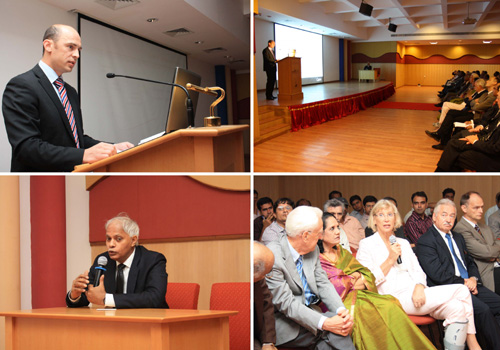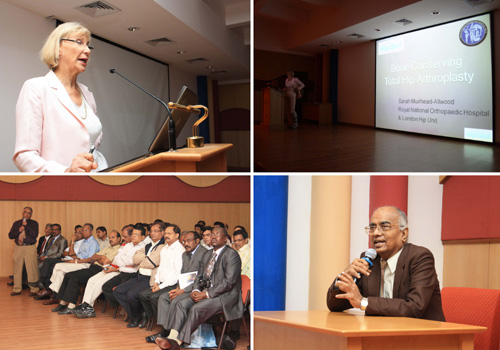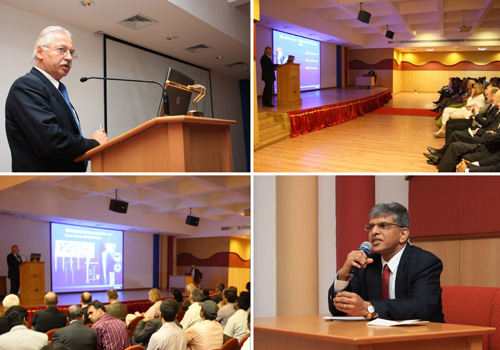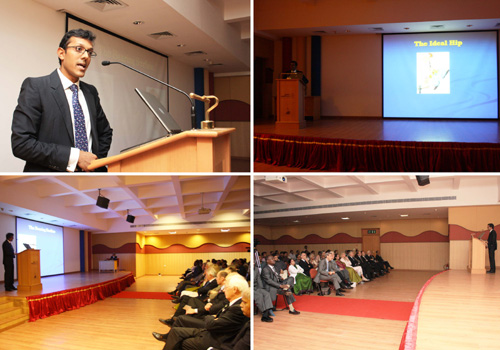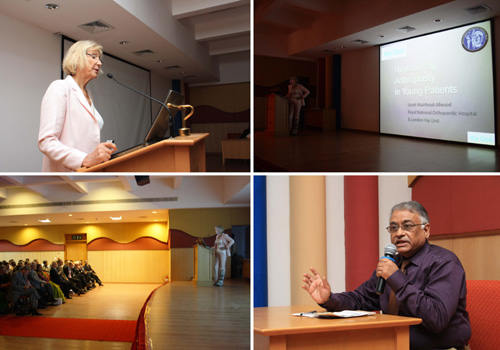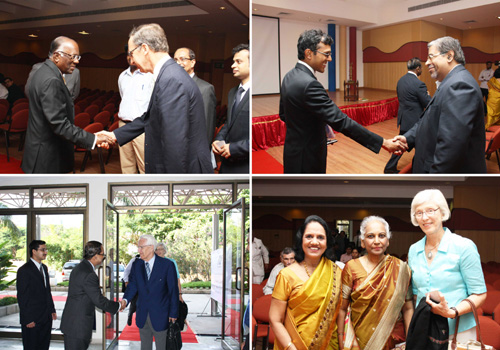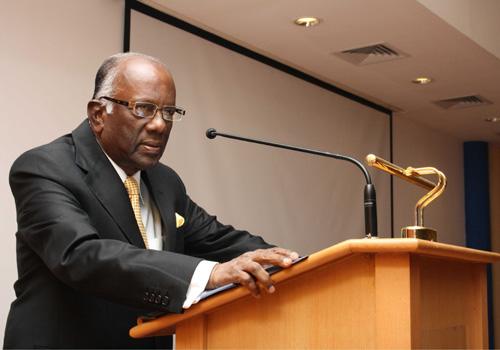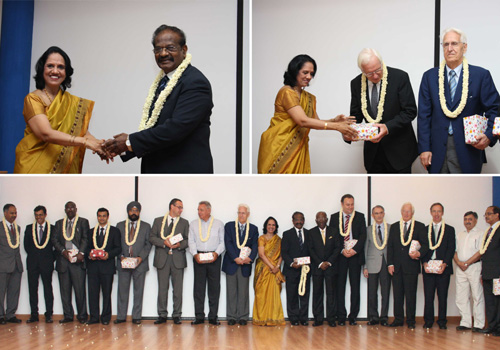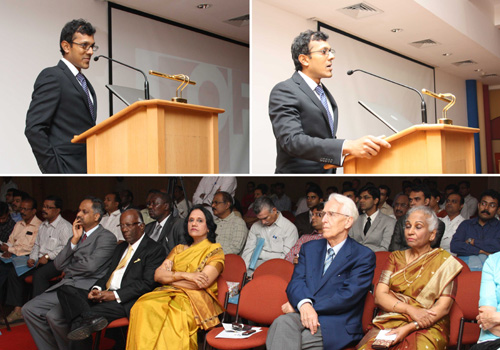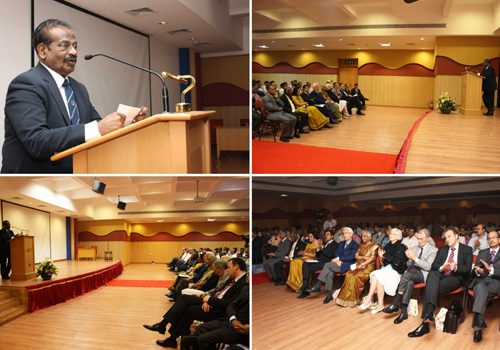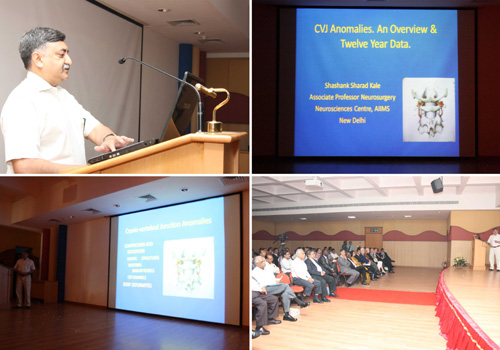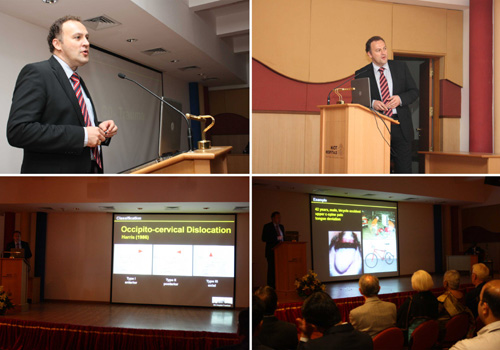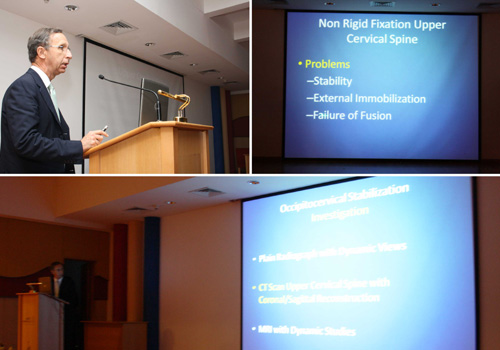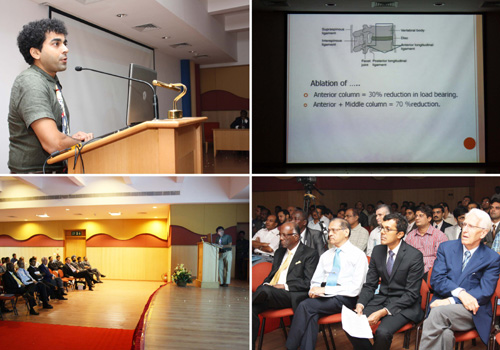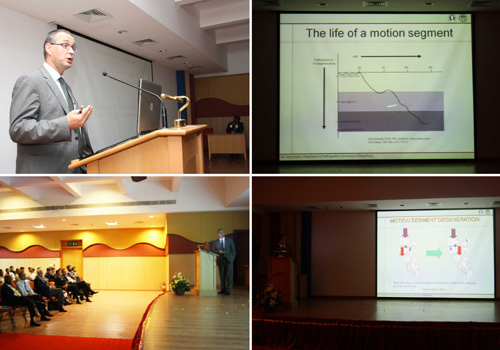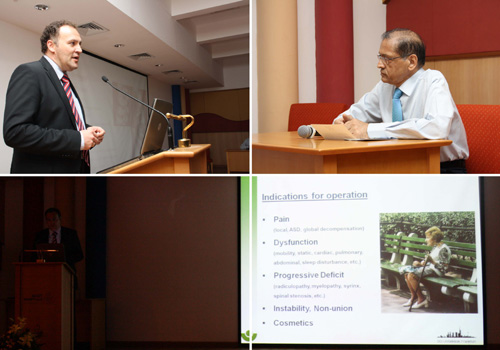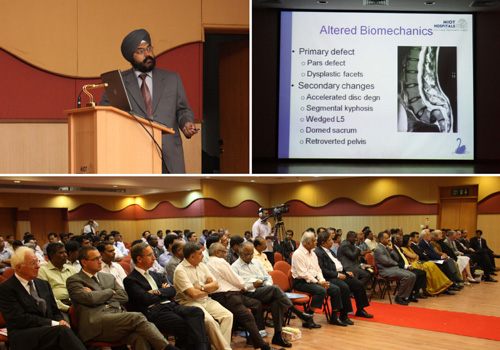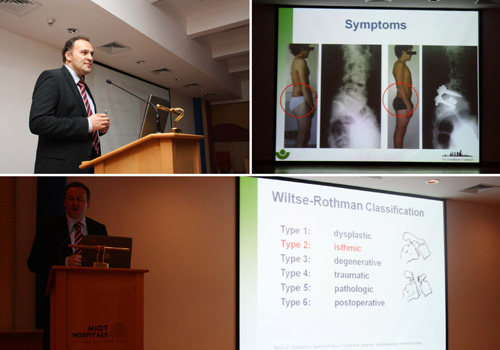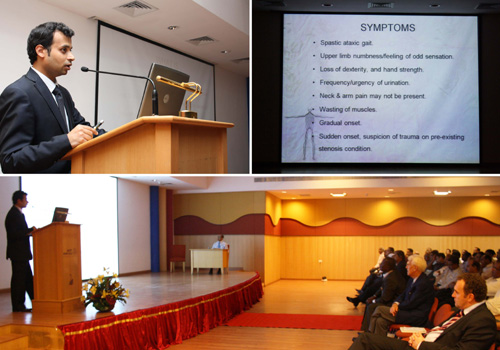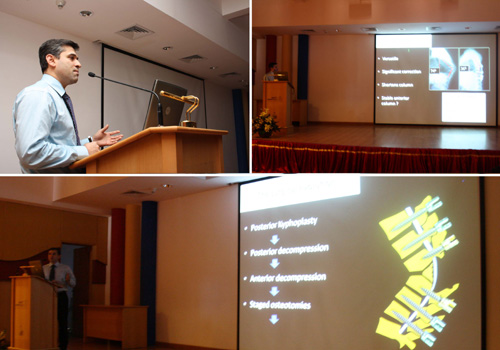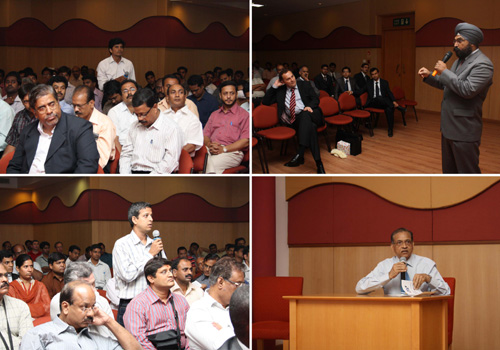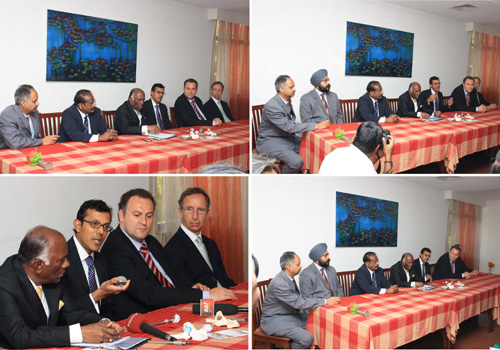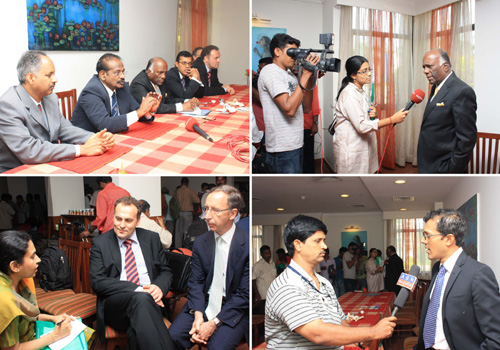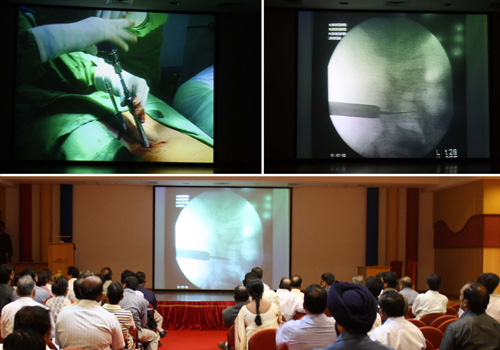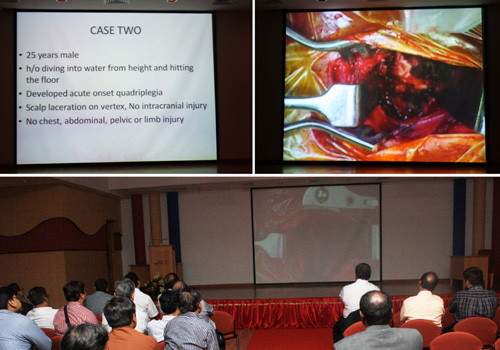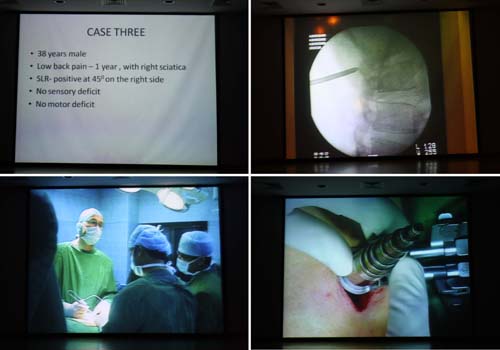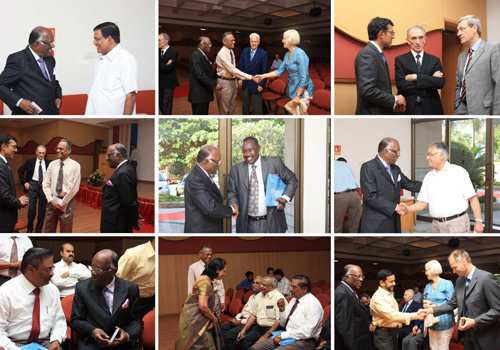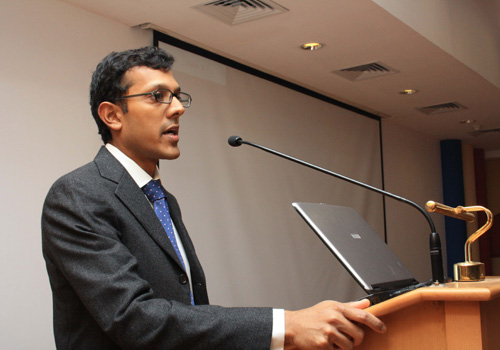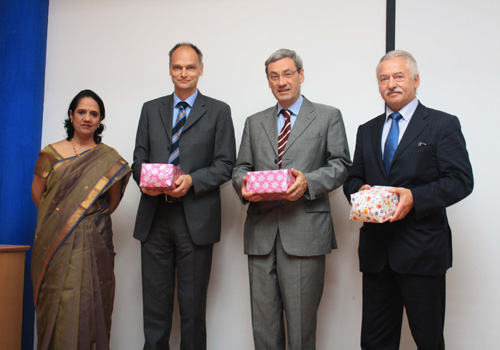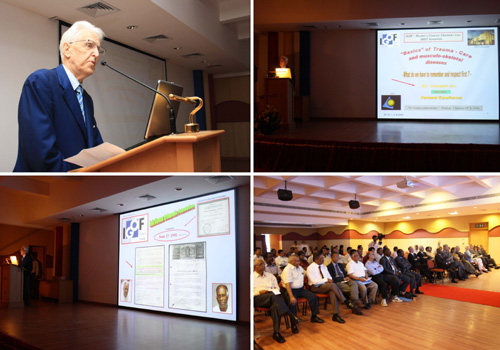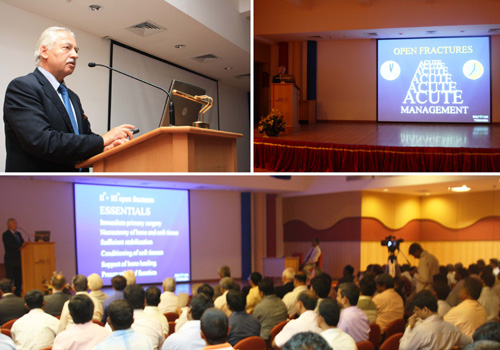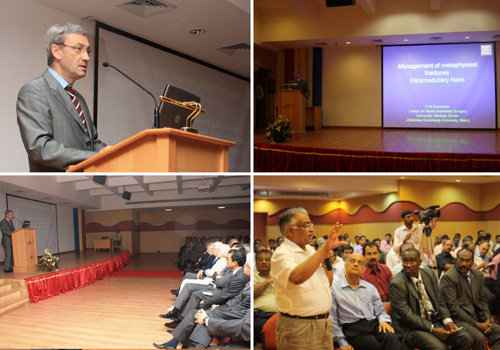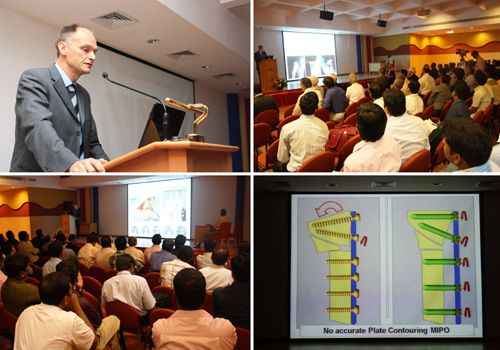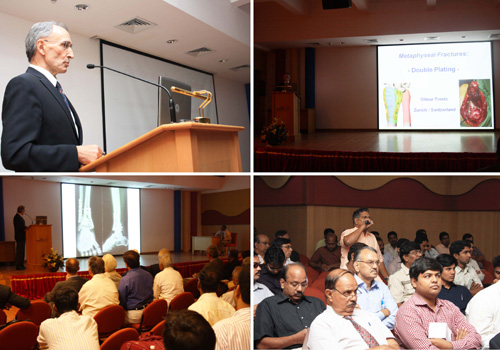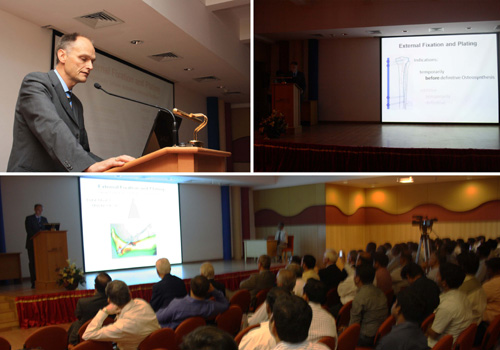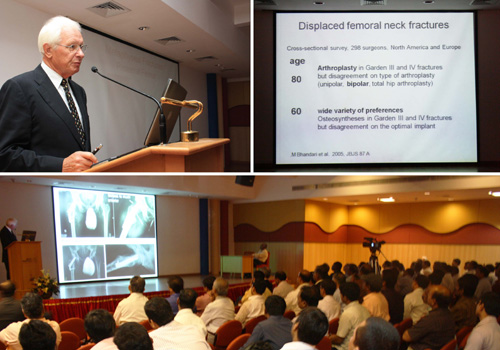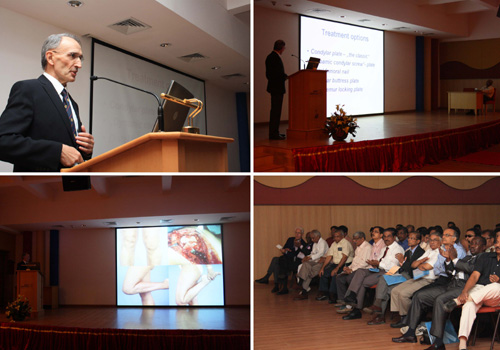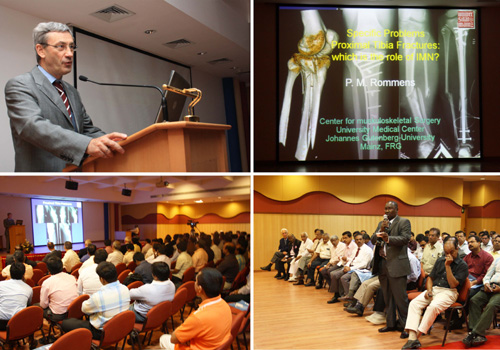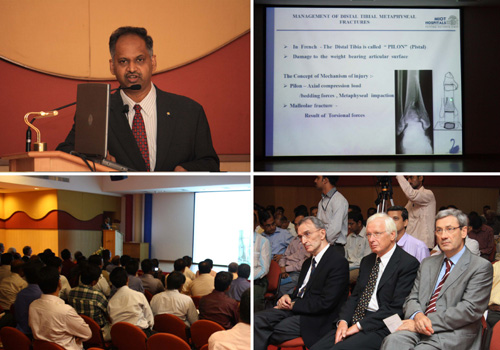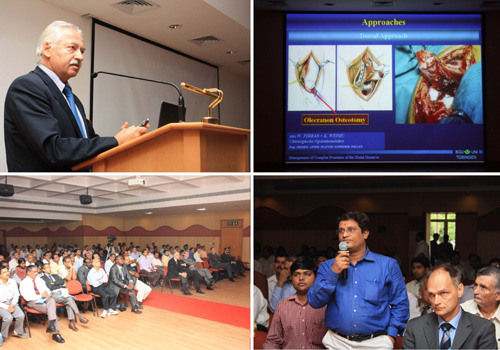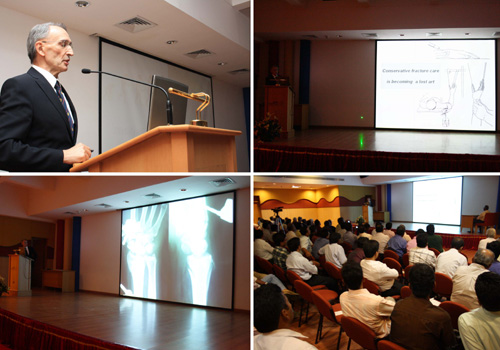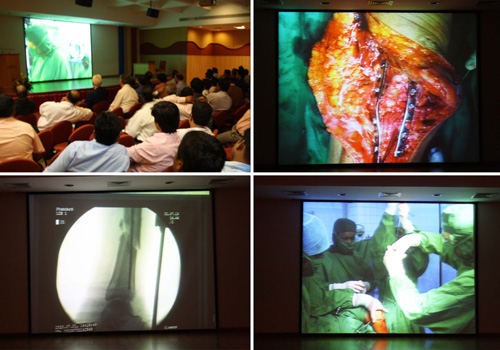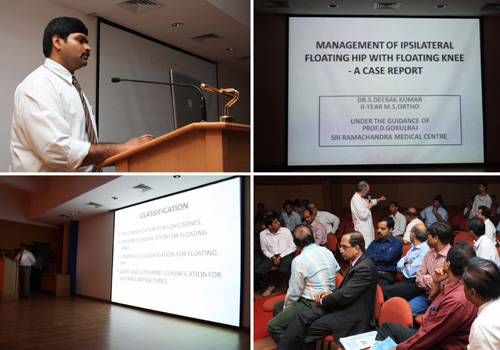Recent Events
Master Course on Spinal Surgery, Trauma & Joint Replacement Surgery
The Indo German Orthopaedic Foundation successfully conducted the Master’s Course on Spinal Surgery, Trauma Surgery and Joint Replacements. The common man often feels that Doctors are super humans and that they know everything. Science is never static. Technology is changing every minute – So also medicine.
Four decades ago, Surgeons were taught how to immobilize joints rigidly for prolonged periods of time without any movement so that the fractures will heal. But, however, today prolonged rigid immobilization of fractures have given way to early mobilization. It was customary to think that bone and joint surgery will fail. Doctors were afraid of operating on joints. But, today, with the advanced frontiers in medicines, surgery has helped many a crippled person to get back to normal life within a short period of time. Immobilisers have disappeared. Mobilisers have come into being.
Because of our history, we looked upon the United Kingdom for advanced training after our graduation in India in any field of science. Doctors too went to England to be trained.
Prof.P.V.A. Mohandas during his training period had the opportunity to be trained in Switzerland and Germany and made lasting friendship with some of the leading innovatorsin Orthopaedic surgery
– Prof. Moris Muller
– Prof. Siegfried Weller
– Prof. Ulrich Holz
– Prof. Otmar Trentz
He was so impressed with the technological advancements which Germany had made in the field of Orthopaedics. The plaster of paris application had completely disappeared and gave rise to early mobilisation of joints. The results were astounding. Prof. Mohandas was convinced that to improve fracture treatment in India, he has to create awareness amongst surgeons first.
Because of his friendship with Prof. Weller, Prof. Holz and Mr. Klaus Hug, he created a Foundation – Indo German Orthopaedic Foundation in 1992 to provide ever lasting Indo European Co.operation and Technology transfer. Already more than 150 Indian Surgeons have been offered Fellowships by Indo German Orthopaedic Foundation for training in Germany and Switzerland.
The Indo German Orthopaedic Foundation continues to encourage full and free exchange of the latest orthopaedic techniques by conducting 4 International Master’s Courses in Orthopaedics in Chennai every year. These have improved the standard of Orthopaedic treatment in this country.
This Master’s Course held at August 2010 saw giants in the field of spine, trauma and joint replacements discussing the most difficult aspects in Orthopaedics and how to
deal with them, July 30,2010 is for stabilization of the spine July 31,2010 is for fractures around the methaphyseas in trauma August 01,2010 is for how to make an artificial joint last a life time (Hip & Knee).
On each of these days, the lectures in the morning were be followed by live surgeries in the afternoon and more than 15 International Surgeons did take part and more than 250 Indian Surgeons attended this meet.
Programme Details
| Topic | IGOF Master’s Course on Spinal Surgery, Trauma and Joint Replacements |
| Venue | MIOT Hospitals, Chennai 600089 |
| Date | 30th, 31st July and 01st August 2010 |
IGOF Master’s Course on Spinal Surgery, Trauma and Joint Replacements – Programme Schedule
DAY 1: FRIDAY – JULY 30, 2010
SPINAL SURGERY
In the last two decades the fear of operating on the spine has disappeared both for the Surgeons and the Public. The patients used to think if they are affected by spinal surgery, they will be paralysed and the Surgeons feared surgery on the spine because of the morbidity associated with the spine surgery. After spinal surgery, patients often had to be in bed for months and some of them develop paralysis.
But, today, spinal surgery has advanced so much that after spinal surgery patients are up immediately as soon as the anaesthesia wears off and are ready to go home in 2-3 days. This has become possible because if in slip disc or disc surgery we replace the disc thereby making the spine stable and it is possible now to correct very severe deformity by fixing the spine with plates, bars, screws, etc., and also replacing the discs with metal disc called cages or artificial discs. It is also now possible to treat malignant condition of the spine by replacing the vertebra itself. The diseased vertebra is removed if they are diseased by infection, T.B. or Cancer and they are replaced. The spine surgery has become simple because we now do minimally invasive surgery through small stab incisions and use microscope to guide us or we use endoscopes to place the implants.
DAY 2: SATURDAY – JULY 31, 2010 TRAUMA SURGERY
All over India, the pattern of injuries is changing. Previously, Orthopaedic surgeons were called upon to treat patients with household accidents, industrial accidents or road traffic accidents involving slow moving carts or motor vehicles. Presently, with improved infrastructure, better roads and faster automobiles, we are increasingly witnessing the polytrauma patient. The profusion of new and well networked rescue services leads to good immediate resuscitation and the multiply injured patient is able to reach the hospital. This patient is usually received critically ill with head and neck injuries, chest injuries, abdominal injuries and fractured bones. If several specialists attend at the same time to this patient, each will want his part of the body tended first. The situation is not that dissimilar to the seven blind men feeling the different parts of the elephant.
The most important requirement in accident care is a Trauma Leader who assesses the patient from head to toe, identifies the areas requiring immediate intervention, stabilizes the patient and treats him as a whole. No area is neglected and ultimately, not only does the patient survive, but every organ of his body is in perfect working order at the end of treatment.
In the absence of this protocol, a multiply injured patient only has treatment focusing on critical areas like head injuries and one finds that other injuries are neglected. When such a patient recovers, he already has several deformities and is not able to get back to normal life. The greatest advancement in Orthopedics is therefore the simultaneous treatment of various injuries in a poly trauma patient so that the individual completely recovers and is able to get back to his usual daily routine.
DAY 3: SUNDAY – AUGUST 01, 2010 JOINT REPLACEMENTS
Artificial joints without debris
In the 1960s and 70s, Hip replacement surgery revolutionized the treatment of diseased joints. The hip is a ball and socket joint. The early artificial joints comprised a metal ball moving in a plastic socket. Studies showed that this joint, when implanted in young or active individuals, produced debris when the metal ball slowly ground into the plastic socket. This debris causes destruction of the bone and loosening of the artificial joint. Therefore, it is usual that this sort of joint, when used for young or active people, fails in around ten years.
In the 1980s and 90s, metal on metal became popular. Chromium Cobalt was used and several young persons opted for metal on metal resurfacing. This type of artificial hip was made up of a metal socket and metal ball, both highly polished, with several sizes. The metal ball fits into the socket and moves within it. Studies over the last 10 years have shown that this artificial joint also produces debris in the form of metal ions. Groups of surgeons in Australia, England and the USA published several problems produced by these metal ions in the first few years after surgery. The ions caused allergic reactions, produced tumours in the joint, caused thinning of the bone, affected the chromosome, etc. Some patients needed redo surgery as their bodies rejected the implants and eventually some metal on metal products were withdrawn from the market.
The present thinking is to use joints that do not produce debris, in order to reduce the risk of failure. The use of components with very low friction would permit smooth movement and at the same time no particles would be liberated into the joint. The answer is ceramic. Newly produced Delta Ceramic is immensely strong and used in the shipbuilding and automobile industry. It also has a very low co-efficient of viscosity. When a delta ceramic ball moves within a delta ceramic socket, tests show that virtually no particles are produced. Further, because it is so strong, it can withstand a huge amount of stress.
MIOT Hospitals has used Delta Ceramic for the first time in India and successfully replaced 372 hips with this technology. It is mainly for patients under the age of forty years who want to perform high impact activity (running, swimming, sports, etc) and it comes in various sizes. We feel that this is the artificial joint of the future for the young and active patient.
Click here to download the IGOF Master’s Course on Spinal Surgery, Trauma and Joint Replacements – Invitation and Application Form with schedule in .pdf format.
Spinal Surgery, Trauma and Joint Replacements – 30th, 31st July and 01st August 2010

